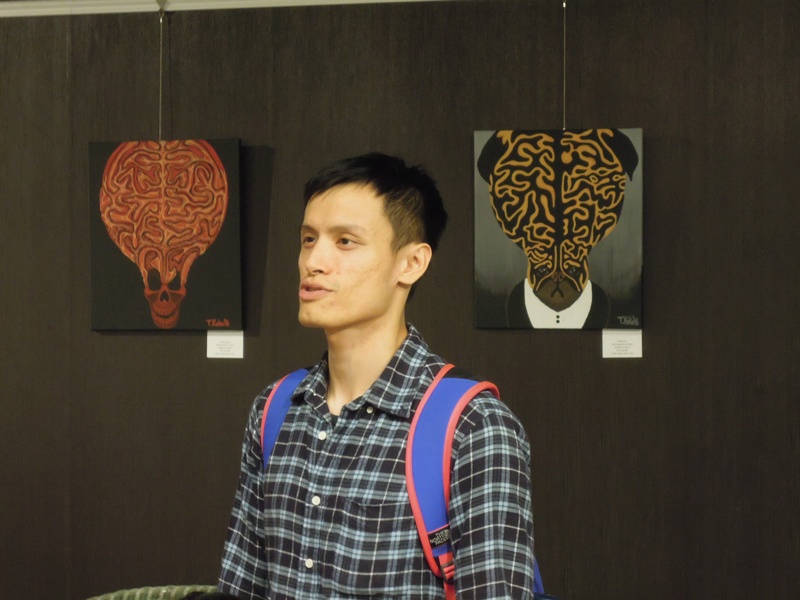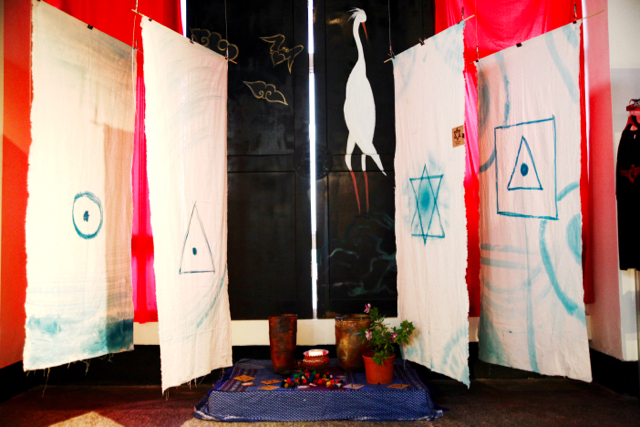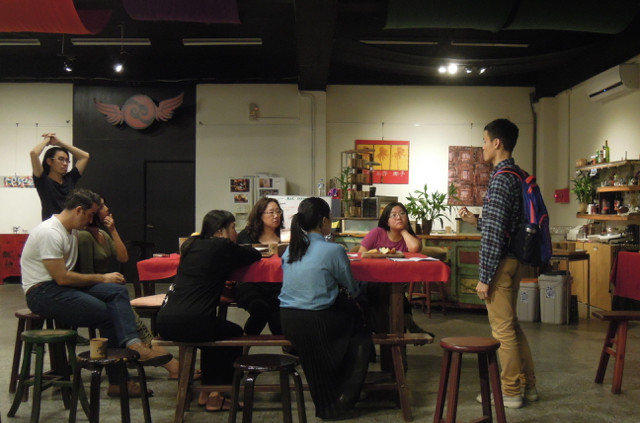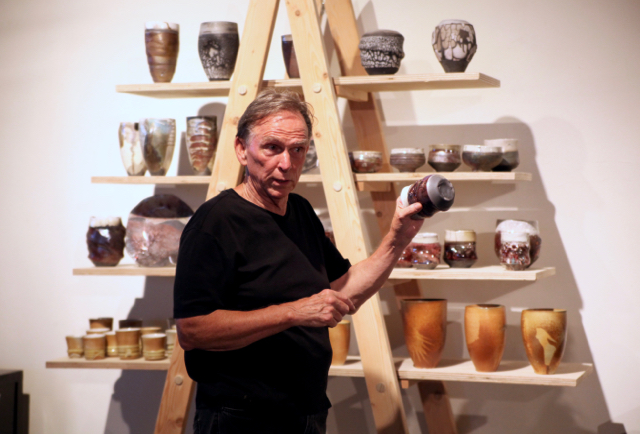Roma Mehta, David Pipkin – VDX
Roma Mehta
I grew up in Calcutta, a densely populated city where the entire spectrum of human experience was in plain sight everywhere you looked. From a very early age i found joy in art and painted every chance i got. It was a way to connect with my inner self and provided an escape from the sadness and misery around me. I could not fix what i saw, but i could create something beautiful.
I decided to study graphic design in college so that i could ensure a living while continuing to paint in my free time. Art and design merged as the years went by and became a way of seeing and understanding the world around me.
My art is a collection of episodes that afford glimpses into moments of clarity and have been essential in my journey.
Portraits, lines and shapes, energy, colours, all blend and become the lens through which I see the world. Art gives me the insights I need to understanding the world I have chosen to live in. India remains the vibrant inspiration, the chaos of my soul and my palette. It disturbs my senses and calls me to become involved. Taiwan brings order to the chaos of things beyond my control. Helps me linger longer in the creative space.
with the first brush stroke
the canvas becomes the master
and leads me through a spirit journey.
i remain receptive as thoughts unscramble and a story unfolds on a living canvas.
inspired by the energy of india,
the spirit of taiwan,
the beauty of our planet,
the embrace of its people.
Artist Bio:
Roma Mehta is originally from India. A graphic designer, an artist, and a committed community member, she has made Taiwan her home since 1987.
I was devoured, and then lifted into the clouds
Red Room presents Visual Dialogues XIII / Sitar & Tabla Performance
Sunday, 4th December 2016: I was devoured, and then lifted into the clouds.
Not in a dream, but rather, during the course of a day of art and community at Red Room 紅坊國際村. Capable of being many things to many people—art gallery, concert venue, workshop space, spoken word poetry slam, and cozy spot to hang out—Red Room is a special place for the arts lovers of Taipei.
The warm community fostered by Red Room’s eclectic, friendly approach to the arts is singular in its lack of judgment. I’ve never much enjoyed going to art galleries, leery of those sterile, sacred spaces where I’m often shushed for laughing too loudly. Devoured 吞噬, the gallery opening I attended that Sunday at Red Room, offered an entirely different experience. We looked at, and talked about the art, of course—but we also snacked on chips and fruit, shared plans for the holidays, and felt free to explore the space. I even skimmed through Red Room’s book collection while I was waiting for the next event, a sitar and tabla concert.
(I love that about Red Room. The entire space is available for people to use—nothing is off-limits. There’s no pressure to conform to preset expectations. Artists and art lovers can be snobs, which is not always a bad thing—but Red Room cultivates an atmosphere of openness to all, which I find refreshing. There’s freedom to experiment in such an atmosphere.)

Annie Hsiao-Wen Wang, collected plastic trash from the ocean, and constructed a turtle from all that human waste
When I first walked in that Sunday afternoon, I didn’t get very far. There was a giant white turtle right at the door, greeting people as they came in. The video projected on the wall above it showed the making of the turtle—how the artist, Annie Hsiao-Wen Wang, collected plastic trash from the ocean, and constructed a turtle from all that human waste. Turtles, of course, are among the many creatures harmed by plastic pollution.
We all could use more reminders of the environmental impacts of the daily things we do without really thinking about them. Eating meat, one of the subjects of T.K, or Taylor Kaku—the other artist featured in the exhibition—is another thing many of us don’t really think about, although it deserves reflection. T.K’s wood sculptures of animal carcasses confront us with the once-living creatures that are made into the meat we eat. Devoured吞噬, as the thirteenth edition of Red Room’s Visual Dialogues series, certainly made me reflect on practical things I can do in my own life to live up to my theoretical ideals.

T.K’s wood sculptures of animal carcasses confront us with the once-living creatures that are made into the meat we eat.
Although the two artists were there in person, and they briefly introduced their work, they didn’t host a panel talk like I thought they would. I was surprised by this, at first, but it makes sense in the context of Red Room’s informal atmosphere. There’s no need to host a formal panel when you can just go up and talk to the artists yourself—or so it must be supposed.
T.K is Taiwanese, while Anne Hsiao-Wen Wang was born in Taiwan but grew up in Australia. Red Room is both internationally minded and focused on the local. The sitar and tabla performance later that Sunday was a great example of this dichotomy.
The audience was predominantly Taiwanese; the sitar player, Hansraj Prabhakar, was visiting from India at the request of a former student, who lives in Taiwan. The tabla player, Toshiro Wakaike, hails from Japan.
Eventide. People began to slowly file in. They lingered by the giant sea turtle at the door, peered closer at the paintings on the walls, and enjoyed the art from Devoured 吞噬while they were waiting.
As they sat close together on the large red carpets covering the floor—no shoes allowed—the room began to fill. Red Room transformed seamlessly from a reflective art gallery into a buzzing concert venue, with art included. I love that about Red Room. It serves versatile purposes, all with the aim of making art—all kinds of art, from music to visuals to the spoken word—available to those who seek it.
When the concert finally began, the room came alive with the shared pleasure of being transported, floating, into a world where songs never end. The music was soaring high in the clouds. Down on earth, people let themselves be lulled into a trance and carried away…
Of course, nothing does go on forever. When the music finally came to a close, we all woke up from our collective dream. As we departed, on our separate ways, we said our farewells cheerfully, for we knew we might come together again some other night—at Red Room, where anyone can have a voice, and where everyone will be heard.
by April Xiong






